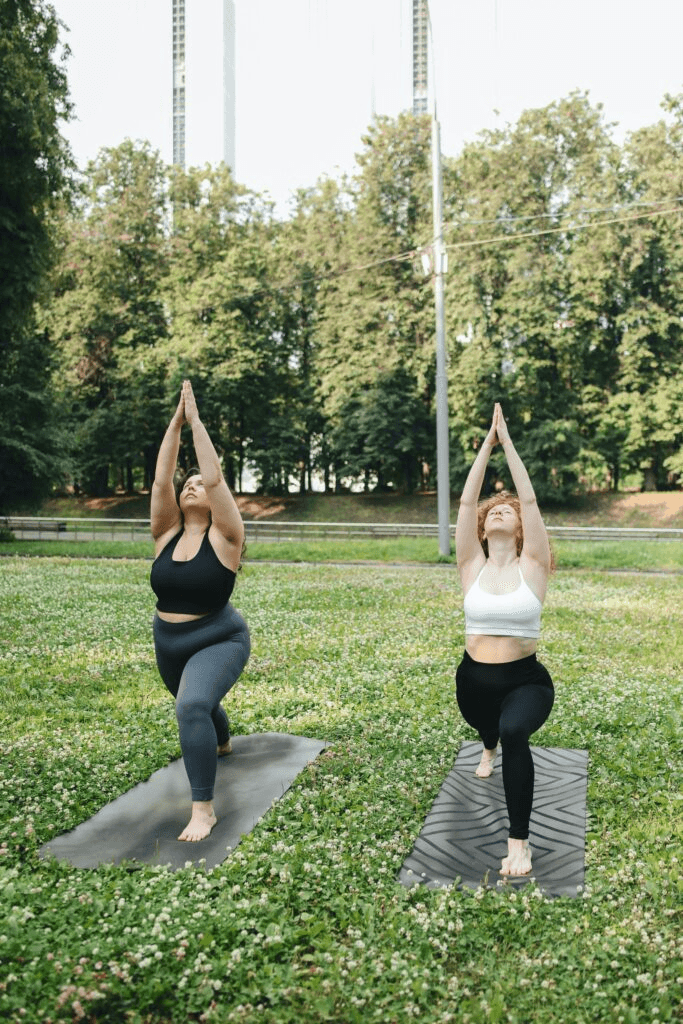If you find it hard to keep up with this rhythm, we suggest checking out our movement practice — a 4-week self-paced program designed just for you.
The Science Behind How Movement Improves the Mind and Soul

Influencing health and well-being through movement
Scientists have long accepted the fact that movement is inextricably linked to the state of an individual’s mind and soul. Through years of research, it’s been proven that physical activity is vital to our long-term physical, mental, and emotional health.
In fact, evidence of this is clear throughout the natural world. For many living creatures, movement means survival, communication, and even connection with the external world.
Naturally, the actual movements bodies make don’t happen independently—flexing your fingers, for example, might seem like an instantaneous action, but your hand won’t move until your brain commands it to do so. Movement is therefore intrinsically connected to how our brain functions.
As the world continues to change and technology advances at a rapid pace, humans have become very accustomed to a sedentary lifestyle: something that’s simply not seen in other species. The decline in cognitive ability and increasing prevalence of mental health conditions have been directly attributed to the absence of movement. The connection between the mind, body, and soul, however, may go deeper than we ever could have imagined. Let’s find out how.
 How do we move?
How do we move?
Before we dive into the benefits of movement on both mind and body, we need to understand how the connection even works. All creatures move. Most of the time, we don’t really think about it; we just seem to do it. But how?
In basic scientific terms, movement occurs when the brain sends out electric signals via the nervous system, which includes the nerves and spinal cord. This signal is then transmitted to our muscles, which contract to create the desired movement.
At Columbia University’s Zuckerman Institute, ongoing research is making big strides in explaining how our nervous system allows us to move. From the renowned team of experts studying movement, we now know that this knowledge could potentially be used to slow down, or even completely stop, the effects of certain neurological disorders.
Researchers are using cutting-edge technologies to analyze brain-activity patterns critical for coordinating muscle movement in a bid to better understand how our brains control our bodies. Hopefully, the results of these studies will one day help treat disorders such as Parkinson’s disease, among others.
Movement and cognitive skills
Being able to move is intrinsically linked to our brains, but the brain is an infinitely more complex structure than we could imagine. Research shows that movement goes beyond affecting physical health, not only can it also trigger mental health issues such as anxiety and depression, but it has also been linked to the development of cognitive skills.
For instance, being still for too long can inhibit creativity and has been proven to produce worse academic results in children.
The mind-body connection
Studies show that the connection between the brain and body is more intricate than previously thought. In purely scientific terms, an elaborate network in the cerebral cortex controls the adrenal medulla, which is in charge of our stress response. Therefore, this connection could explain why we find certain sensations relaxing, while others are more stressful—and why yoga and pilates have long been hailed as stress-busting exercise disciplines.
Peter Strick, a neuroscientist exploring the psychological mechanisms between movement and the brain states, “How we move, think, and feel have an impact on the stress response through real neural connections.” As a result, movement and exercise are directly linked to the way we cope and manage certain feelings, meaning more movement—in any capacity—is going to have a positive effect on our resilience and resistance to stress.

Get the most out of movement
From decreasing the risk of cardiovascular disease and ailments like diabetes and cancer to reducing the symptoms of depression and anxiety—the benefits of movement are endless. Movement does not have to involve an intense gym session or a marathon run; it’s more than just intense physical activity. Instead, your focus should be to get your body moving in any way that feels good to you.
However, your exercise sessions must be relatively consistent, whatever activity you choose. This is the only way to reap optimal benefits to your physical and emotional through movement. Even walking more often or challenging yourself to consistently take the stairs instead of the elevator can support your well-being. At IE, our students report walking for 30 minutes or more at least 5 days out of the week, movement that can greatly support their general health and well-being.
Additionally, movement has been shown to boost the release of endorphins, which creates an overall feeling of happiness and helps relieve stress. Movement can act as a form of self-expression and can strengthen the personal connection we have with our bodies.
So, what next?
As you might have guessed, movement in general is the answer. Keeping a consistently active lifestyle is the only reliable path to a healthier mind and body. As writer Caroline Williams notes, “Whether you want to learn better, slow brain aging, spark new ideas or just feel more in control of your mental health, there is almost nothing that moving more […] can’t help you achieve.”
This is difficult with the way the modern world operates today, where everything is just a click away, so conscious steps have to be taken to ensure better overall health. Keeping your body moving every day is essential: it’s key to maintaining your overall health, well-being and happiness in the long run.